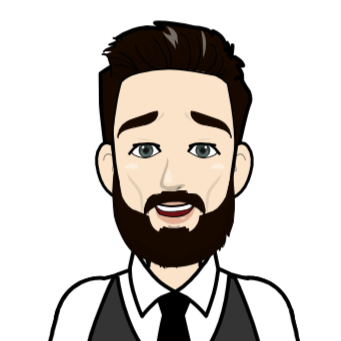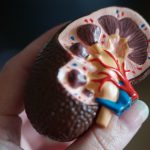
Oral health is the cornerstone of our overall well-being, impacting our daily abilities to chew, speak, and even our self-esteem. Within the realm of oral health, two common adversaries emerge: tooth cavity vs. stain. These dental foes can wreak havoc on our teeth and molars, affecting both their functionality and aesthetics.
In this comprehensive exploration, we will delve into the scientific nuances of cavities and stains, understanding their origins, symptoms, prevention, and treatment.
Key Takeaways
- Oral Health is Essential: Maintaining good oral health is fundamental to our overall well-being, affecting our ability to chew, speak, and our self-esteem.
- Cavities are Caused by Bacteria: Cavities, also known as dental caries or tooth decay, result from bacteria in the mouth feeding on sugars and producing acid that can erode tooth enamel.
- Symptoms of Cavities: Common symptoms of cavities include toothaches, sensitivity to temperature changes, visible holes in teeth, and discoloration.
- Preventing Cavities: Preventing cavities involves good oral hygiene practices such as regular brushing, flossing, dental check-ups, and limiting sugary and starchy foods.
- Treatment for Cavities: The treatment for cavities varies based on their severity and can include dental fillings, crowns, or root canals to restore the tooth’s structure.
- Types of Tooth Stains: Tooth stains can be categorized as extrinsic (on the surface) and intrinsic (within the tooth structure) and have different causes and treatment approaches.
- Preventing Stains: Preventing tooth stains involves regular dental cleanings, minimizing staining foods and beverages, using a straw, quitting smoking, and maintaining good oral hygiene.
Understanding Cavities
Cavities, scientifically known as dental caries or tooth decay, are the result of a complex interplay of various factors. The primary culprits behind cavities are bacteria in the mouth, especially Streptococcus mutans. These bacteria feed on the sugars and carbohydrates in our diet and produce acid as a byproduct. This acid can erode the enamel, the protective outer layer of our teeth, leading to the formation of cavities.
The enamel is primarily composed of hydroxyapatite, a crystalline structure rich in calcium and phosphate. When the pH in the mouth drops due to acid production, it can demineralize the enamel, making it more susceptible to cavities. Over time, the demineralized areas can progress into cavities, which are essentially holes or openings in the enamel.
The Symptoms of Cavities
Cavities often present with a range of symptoms, including:
- Toothache: As the cavity progresses and reaches the sensitive dentin or pulp inside the tooth, it can cause pain or discomfort.
- Sensitivity to Hot and Cold: Cavities can make your teeth more sensitive to temperature changes.
- Visible Holes: In advanced stages, cavities may appear as visible holes or pits in the affected tooth.
- Discoloration: Teeth with cavities may develop white, brown, or black spots.
Preventing Cavities
The prevention of cavities largely revolves around maintaining good oral hygiene practices. Some preventive measures include:
- Regular Brushing: Brush your teeth at least twice a day with fluoride toothpaste to remove plaque and food particles.
- Flossing: Regular flossing helps clean between teeth where a toothbrush can’t reach.
- Dental Check-ups: Visit your dentist for regular check-ups and professional cleanings.
- Limit Sugary and Starchy Foods: Reducing your consumption of sugary and starchy foods can minimize the fuel available for cavity-causing bacteria.
Treatment for Cavities
The treatment for cavities varies depending on the severity of the condition. Common treatment options include:
- Dental Fillings: For small to moderate-sized cavities, your dentist may use fillings made from materials like composite resin, amalgam, or porcelain to restore the tooth’s structure.
- Dental Crowns: Larger cavities may require the placement of a dental crown to protect and strengthen the tooth.
- Root Canal: If the cavity has reached the pulp of the tooth, a root canal procedure may be necessary to remove the infected tissue.
Understanding Stains
Tooth staining or discoloration is another common dental concern, and it can be caused by various factors. Stains on teeth are categorized into two main types: extrinsic and intrinsic.
- Extrinsic Stains: These stains occur on the outer surface of the tooth enamel and are often caused by external factors like food, beverages, and tobacco use. Common culprits include coffee, tea, red wine, and smoking.
- Intrinsic Stains: Intrinsic stains are discolorations that occur within the tooth’s structure. They can be caused by factors such as dental trauma, excessive fluoride consumption during tooth development, or certain medications, like tetracycline antibiotics.
The Symptoms of Stains on Teeth
Stains on teeth can manifest in various ways, and the specific symptoms depend on the type of stain, whether it’s extrinsic or intrinsic.
Extrinsic Stains: Extrinsic stains occur on the outer surface of the tooth enamel, often caused by external factors. Symptoms include:
- Surface Discoloration: Extrinsic stains typically show as visible color changes on the tooth enamel.
- Yellow or Brown Stains: They’re often yellow, brown, or dark.
- Stain Patterns: They may form streaks or spots.
- Superficial Nature: Extrinsic stains are relatively easy to remove.
Intrinsic Stains: Intrinsic stains originate within the tooth structure, making them harder to treat. Symptoms include:
- Deep Discoloration: Intrinsic stains affect the core tooth color, with shades from pale gray to dark brown.
- Uniform Staining: They usually affect the whole tooth or a significant part of it.
- Teeth Appear “Lifeless”: Affected teeth look dull and lack natural luster.
- Variety of Causes: Intrinsic stains result from factors like dental trauma, developmental conditions, or medication use.
- Limited Response to Whitening: Intrinsic stains are less responsive to traditional whitening methods. Dental veneers or bonding may be needed for correction.
Preventing Stains on Teeth
Preventing stains on teeth involves a combination of lifestyle choices and oral hygiene practices. Some preventive measures include:
- Regular Dental Cleanings: Professional dental cleanings can remove surface stains.
- Brush and Floss: Good oral hygiene can help prevent extrinsic staining.
- Minimize Stain-Causing Habits: Limit the consumption of staining foods and beverages, and avoid tobacco use.
- Fluoride Toothpaste: Using fluoride toothpaste can help protect enamel and prevent intrinsic staining.
Treatment for Stains on Teeth
The treatment for stains on teeth depends on the type and severity of the discoloration. Common treatment options include:
- Teeth Whitening: Extrinsic stains can often be treated with teeth whitening procedures, which may be performed in a dental office or using at-home kits.
- Veneers: For more severe intrinsic stains, dental veneers, which are thin shells bonded to the tooth’s surface, can provide a long-lasting solution.
- Dental Bonding: This technique involves applying a tooth-colored resin to the tooth’s surface to mask stains.
Cavity vs. Stain on Molars and Front Teeth
Cavities and stains on molars (back teeth) and front teeth exhibit distinct characteristics and potential treatment options. Let’s compare them specifically for these two types of teeth:
Cavities:
- Causes: Cavities can develop on both molars and front teeth. They are primarily caused by the activity of bacteria in the mouth, which feed on sugars and produce acids that erode tooth enamel. The bacteria can affect any tooth in the mouth.
- Symptoms: Symptoms of cavities on both molars and front teeth include toothache, sensitivity to hot and cold, visible holes or pits in the affected tooth, and discoloration (white, brown, or black spots).
- Location: Cavities can occur on the surface of molars or front teeth, but they may be more noticeable on the smoother and more visible front teeth.
- Treatment: Cavities on both types of teeth are treated similarly. Dental fillings, dental crowns, or root canals may be necessary, depending on the severity of the cavity. The goal is to restore the tooth’s structure and prevent further decay.
Stains on Teeth:
- Causes: Stains on molars and front teeth can result from various external factors such as consuming staining foods and beverages, tobacco use, or intrinsic factors like dental trauma, developmental conditions, or medication use. Stains on front teeth may be more noticeable due to their location.
- Symptoms: Stains on molars and front teeth manifest as changes in tooth color. Extrinsic stains may appear as yellow, brown, or dark spots on the enamel. Intrinsic stains affect the core color of the tooth, leading to deep discoloration.
- Location: Extrinsic stains are more common on molars because they often result from food and beverage consumption. However, both types of teeth can develop stains. Intrinsic stains can affect any tooth, leading to a uniform color change.
- Treatment: Extrinsic stains on both molars and front teeth can be treated with teeth-whitening procedures or professional cleanings. Intrinsic stains are less responsive to traditional whitening methods and may require dental veneers or bonding for correction. Stain removal may be more of a cosmetic concern on front teeth due to their visibility.
Cavity vs. Stains Preventative Care
Maintaining good oral hygiene and making wise lifestyle choices can go a long way in preventing cavities and tooth stains. Here are some tips to help you keep your teeth healthy and free from these common dental issues:
Tips for Preventing Cavities:
- Brush Your Teeth: Brush your teeth at least twice a day using fluoride toothpaste. Make sure to brush for at least two minutes, covering all tooth surfaces.
- Floss Daily: Flossing helps remove food particles and plaque from between your teeth and along the gumline, where your toothbrush may not reach.
- Use Mouthwash: Consider using an antimicrobial or fluoride mouthwash to help reduce bacteria and strengthen enamel.
- Limit Sugary and Starchy Foods: Cut down on sugary and starchy snacks and beverages, as these provide a food source for cavity-causing bacteria.
- Chew Sugar-Free Gum: Chewing sugar-free gum can stimulate saliva production, which helps neutralize acids and cleanse your mouth.
- Regular Dental Check-ups: Visit your dentist for regular check-ups and professional cleanings. They can catch cavities in their early stages and provide guidance on maintaining good oral health.
- Sealants: Ask your dentist about dental sealants, which are protective coatings applied to the chewing surfaces of your molars to prevent cavities.
- Fluoride: Consider fluoride treatments or toothpaste to help strengthen your tooth enamel and make it more resistant to decay.
Tips for Preventing Teeth Stains:
- Moderate Staining Foods and Drinks: Limit your consumption of staining foods and beverages such as coffee, tea, red wine, and highly pigmented foods like berries.
- Use a Straw: When drinking staining beverages, use a straw to minimize direct contact with your teeth.
- Rinse Your Mouth: After consuming staining foods or drinks, rinse your mouth with water to reduce the immediate impact of staining.
- Quit Smoking: If you smoke, quitting is not only good for your overall health but also beneficial for preventing teeth stains.
- Regular Dental Cleanings: Schedule regular dental cleanings to remove surface stains and keep your teeth looking their best.
- Teeth Whitening: Consult with your dentist about professional teeth-whitening options for more stubborn extrinsic stains.
- Dental Bonding and Veneers: For intrinsic stains or severe discoloration, consider dental bonding or veneers, which can provide long-term cosmetic improvements.
- Maintain Good Oral Hygiene: Continue to brush and floss regularly to keep your teeth clean and healthy. Good oral hygiene can help prevent the buildup of staining substances.
Final Thoughts
In summary, oral health is vital for overall well-being, impacting chewing, speaking, and self-esteem. This article discusses the common dental concerns: cavity vs. stain. Cavities are caused by bacteria feeding on sugars, leading to symptoms like toothaches and sensitivity.
Prevention involves oral hygiene and dental check-ups, with treatments like fillings and root canals. Tooth stains come in extrinsic and intrinsic types. Extrinsic stains result from external factors like food and beverages, while intrinsic stains occur within the tooth structure. Maintaining a healthy smile requires regular dental cleanings, limiting staining substances, and considering treatments like veneers or bonding for intrinsic stains.
Also Read: From Ache to Relief: The Ultimate Guide to Tackling Jaw Pain on One Side
FAQs
- Q: What causes cavities in teeth, and how do they develop?
- A: Cavities, scientifically known as dental caries or tooth decay, are primarily caused by bacteria in the mouth, such as Streptococcus mutans. These bacteria feed on sugars and produce acid, which can erode the protective enamel of teeth, leading to the formation of cavities.
- Q: What are the common symptoms of cavities, and how can I recognize them?
- A: Common symptoms of cavities include toothaches, sensitivity to hot and cold temperatures, visible holes or pits in affected teeth, and discoloration, which may appear as white, brown, or black spots.
- Q: What are some effective ways to prevent cavities in teeth?
- A: To prevent cavities, maintain good oral hygiene practices. This includes regular brushing with fluoride toothpaste, daily flossing to clean between teeth, dental check-ups for professional cleanings, and limiting the consumption of sugary and starchy foods, which provide fuel for cavity-causing bacteria.
- Q: What are the treatment options for cavities, and how are they determined?
- A: Treatment options for cavities depend on their severity. Common treatments include dental fillings for small to moderate-sized cavities, dental crowns for larger cavities, and root canals when the cavity reaches the pulp. The choice of treatment is determined by the dentist based on the condition of the tooth.
- Q: What are extrinsic and intrinsic stains on teeth, and how do they differ?
- A: Extrinsic stains occur on the outer surface of the tooth enamel and are often caused by external factors like food, beverages, and tobacco use. Intrinsic stains are discolorations that occur within the tooth’s structure and can result from factors like dental trauma, excessive fluoride consumption, or certain medications.
- Q: What are the symptoms of tooth stains, and can they be removed easily?
- A: Extrinsic stains often appear as visible color changes on the enamel, with colors like yellow, brown, or dark spots. These are relatively easy to remove. Intrinsic stains affect the core color of the tooth, leading to deep discoloration, and they are less responsive to traditional whitening methods.
- Q: How can I prevent tooth stains, and what are the treatment options if they occur?
- A: Preventing tooth stains involves regular dental cleanings, good oral hygiene, minimizing the consumption of staining foods and beverages, using a straw when drinking such beverages, and quitting smoking.
- Treatment options for stains include teeth whitening for extrinsic stains, and for intrinsic stains or severe discoloration, dental bonding or veneers can provide long-term cosmetic improvements while maintaining good oral hygiene helps prevent staining substances from building up.
#OralHealth #DentalCare #Cavities #ToothStains #PreventativeDentistry #HealthySmile #DentalHygiene #ToothHealth #DentalTips #TeethCare #CavityPrevention #StainRemoval #DentalWellness #SmileConfidence #OralCare101
Note: The information provided in this article is for educational purposes only and should not be taken as medical advice. For personalized health recommendations, it is always advisable to consult with a healthcare professional before incorporating any changes to your daily health routine.








No comment yet, add your voice below!